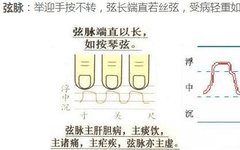The Double String Pulse and the偏弦 Pulse
Inheriting the fire of Qi Huang, a public account with substance and warmth. Ai Yu Xiang Tang “Double String Pulse” and “偏弦 Pulse” are mentioned in the Jin Kui Yao Lue · Phlegm and Cough Disease Pulse Diagnosis and Treatment section, stating: “The double string pulse indicates cold” and “The偏弦 pulse indicates fluid retention.” It … Read more








